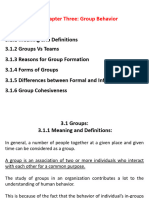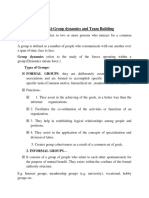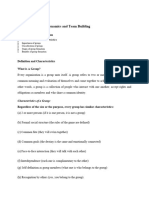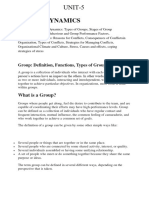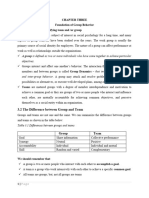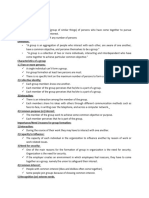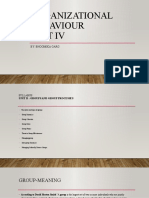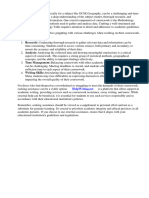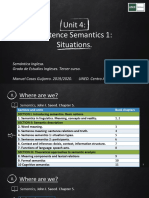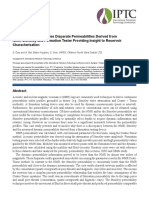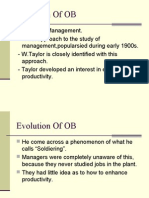0% found this document useful (0 votes)
14 views68 pagesChapter 3
Groups can be formal or informal. Formal groups are intentionally established by management to accomplish organizational objectives. They have designated roles and tasks. Informal groups emerge spontaneously based on personal relationships and interests. Both types of groups provide benefits like companionship, protection, and guidelines for behavior, but informal groups can resist change and create role conflicts. Groups are also classified by intimacy level, membership identity, purpose, and structure. Understanding group dynamics is important for organizations.
Uploaded by
nardoszinabu6Copyright
© © All Rights Reserved
We take content rights seriously. If you suspect this is your content, claim it here.
Available Formats
Download as PPTX, PDF, TXT or read online on Scribd
0% found this document useful (0 votes)
14 views68 pagesChapter 3
Groups can be formal or informal. Formal groups are intentionally established by management to accomplish organizational objectives. They have designated roles and tasks. Informal groups emerge spontaneously based on personal relationships and interests. Both types of groups provide benefits like companionship, protection, and guidelines for behavior, but informal groups can resist change and create role conflicts. Groups are also classified by intimacy level, membership identity, purpose, and structure. Understanding group dynamics is important for organizations.
Uploaded by
nardoszinabu6Copyright
© © All Rights Reserved
We take content rights seriously. If you suspect this is your content, claim it here.
Available Formats
Download as PPTX, PDF, TXT or read online on Scribd
/ 68



